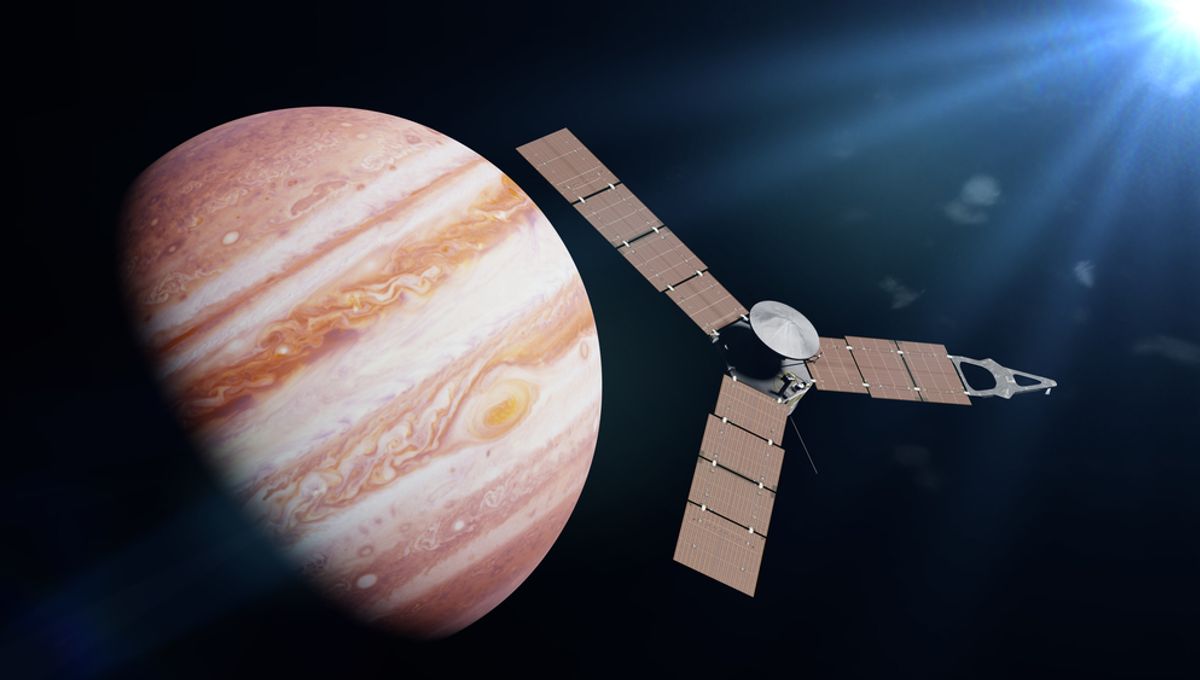
If there are aliens flitting around our sector of the galaxy, existing gravitational wave detectors might be able to detect their spaceships, a team of physicists have claimed. Admittedly, however, their transportation device would need to be rather big.
Gravitational waves are produced by the acceleration of massive bodies. Those we have detected have been the result of remnants of stars spiraling toward each other, accelerating under their mutual gravity. However, University of California, Los Angeles PhD student Luke Sellers noted that to voyage between star systems it is necessary to accelerate on leaving, and deaccelerate on approach to the destination.
Spacecraft would presumably have much lower masses than black holes or even neutron stars. On the other hand, if they are going to approach light speed the acceleration is likely to be very high. In a preprint placed on ArXiv.org, but yet to undergo peer review, Sellers and co-authors run the numbers on what craft LIGO (Laser Interferometer Gravitational Wave Observatory) could detect, and at what distances.
In a nod to Arthur C Clarke’s famous novel, astronomers have coined the acronym RAMAcraft (Rapid And/or Massive Accelerating spacecraft) to describe spaceships capable of voyaging between the stars at large fractions of lightspeed. RAMAcraft are also big enough to transport self-contained communities, rather than needing repairs or replenishment from an inhabited planet.
Although the authors conclude the existing LIGO system could detect certain spacecraft, that’s only because their imagination of how large interstellar vehicles could become extends to the deeply improbable. For example, a RAMAcraft accelerating to the speed of light would be detectable anywhere in our galaxy, but it would need to have a mass similar to Jupiter’s. Even if an entire civilization was decamping to avoid a nearby supernova, it seems unlikely they’d take their local gas giant with them, particularly at such speeds.
Somewhat more realistically, an object the size of Mercury experiencing the same acceleration could be detected at the distance of Proxima Centauri, and possibly about eight times further. Still, if there was a civilization capable of such feats in a neighboring star system, you’d hope we’d have noticed some other clues.
On this basis, the authors’ optimism about gravitational waves may seem misplaced, but they note LIGO is more likely to be the beginning of our journey in such detectors than the end. The proposed DECIGO (Deci-hertz Interferometer Gravitational Wave Observatory) system will be around 100 times more sensitive. Were there attack ships on fire off the shoulder of Orion, DECIGO could detect them provided they were the size of a (very) large moon, not a small one. Modifications to planned detectors could alter their prime frequency ranges to make them better suited to the task.
The authors argue gravitational wave (GW) detectors have several advantages over existing approaches, which mainly involve searching for electromagnetic (EM) radiation. “First, not all systems emit significant EM waves. Second, GW detectors have a vast field of view, while EM images comprise a small fraction of the sky. Third, due to the weakness of gravitational interactions, all GW signals of all frequencies travel through space virtually unimpeded. By contrast, substantial EM radiation absorption occurs,” they write.
Moreover, electromagnetic radiation follows the inverse square law. The strain of a gravitational wave falls only with distance from the source, not the distance squared, a considerable advantage when dealing with distances of thousands of light years.
Against this, is the sheer mass of the objects required for detection. Even the fictional Rama that inspired the category name would have needed to be at the outskirts of the Solar System to be observed this way. The authors also acknowledge that even if we did detect a candidate, it might be hard to distinguish an actual spacecraft from a planet getting sucked into a black hole.
The preprint can be read on arXiv.
[H/T: Phys.org]
Source Link: If Aliens Have Spaceships, Gravitational Wave Network Might Detect Their Movements